#1 AI-powered Translation Plugin For WordPress
Key features to accelerate your website translation project
Get started in minutes
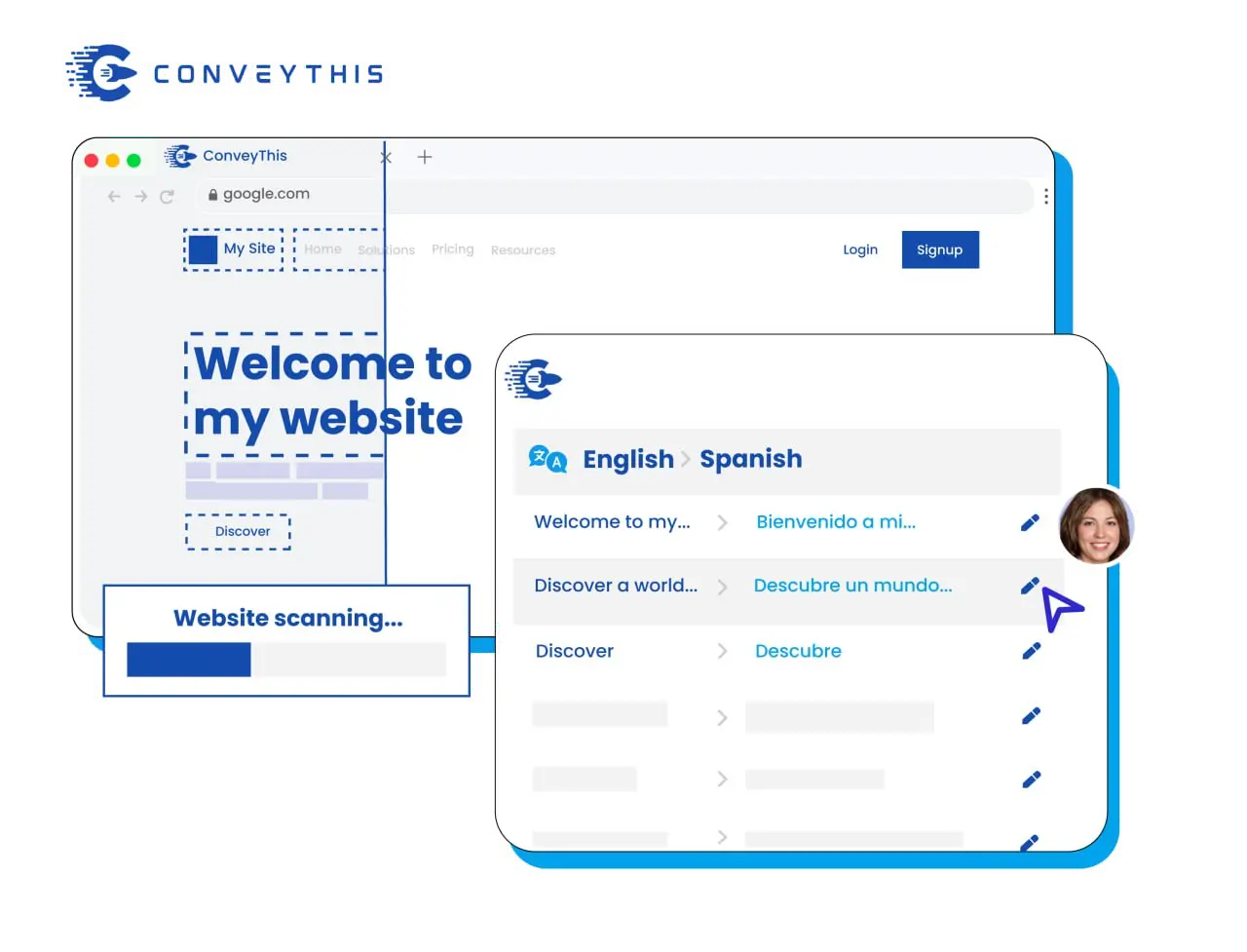
One-Click WordPress Multilingual Setup
Transform your WordPress site into a multilingual platform in minutes, simple and easy. Our plugin installs like any WordPress plugin and automatically configures language detection, visitor routing, and an elegant language switcher that adapts to your theme design. Start reaching global audiences without touching a single line of code or disrupting your current workflow.
Translate Every WordPress Element
Cover your entire WordPress ecosystem with translation technology that finds and translates everything automatically. From blog posts and custom fields to plugin notifications and theme text strings – no content gets missed. Continue managing your site exactly as before while our system handles the complexity of keeping all languages synchronized and up-to-date.
Reach visitors all over the world
WordPress Organic Traffic Optimization
Boost your WordPress site's international search visibility with automated multilingual SEO features. ConveyThis generates proper hreflang tags, creates SEO-friendly URL structures, and translates meta titles and descriptions without additional SEO plugins. Your content gets indexed correctly across all target languages while maintaining your existing WordPress SEO setup.
Get Global With Us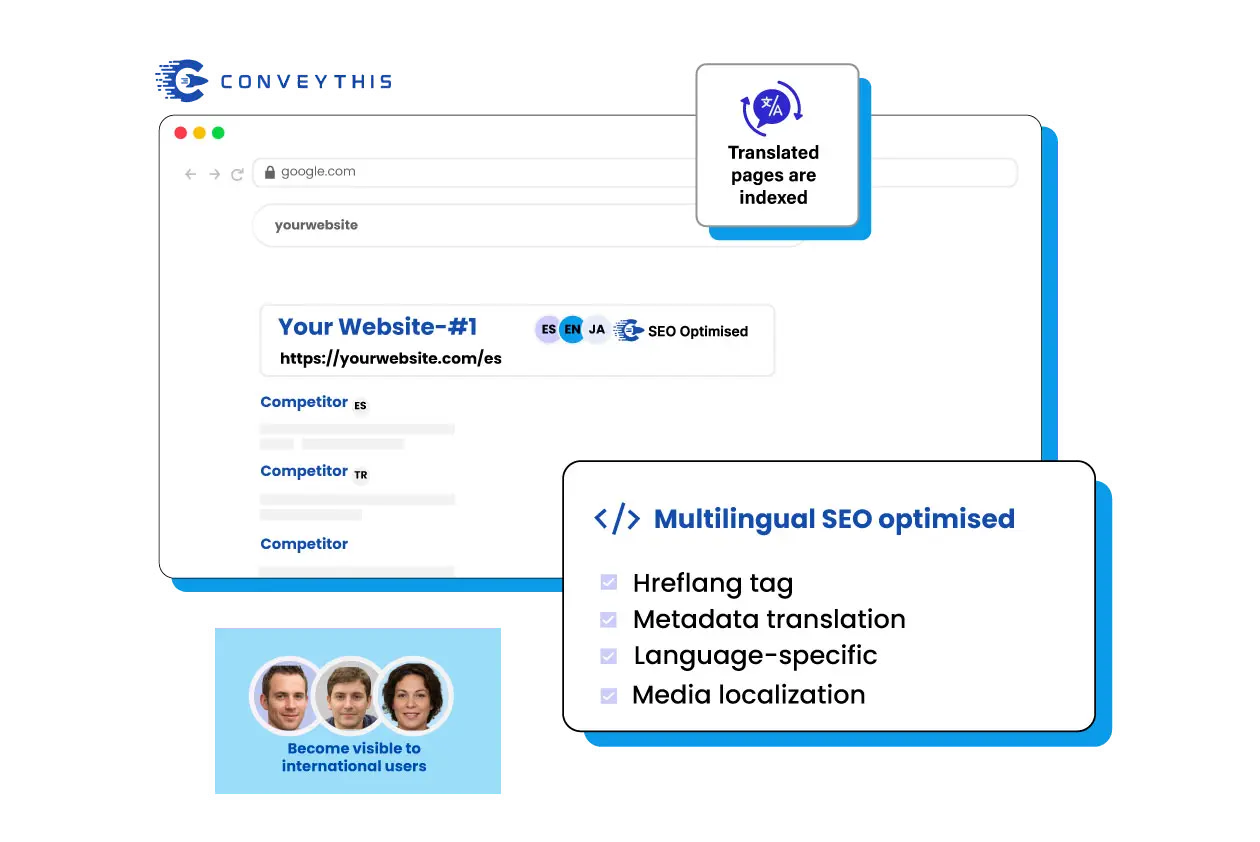
Deliver professional-grade translations
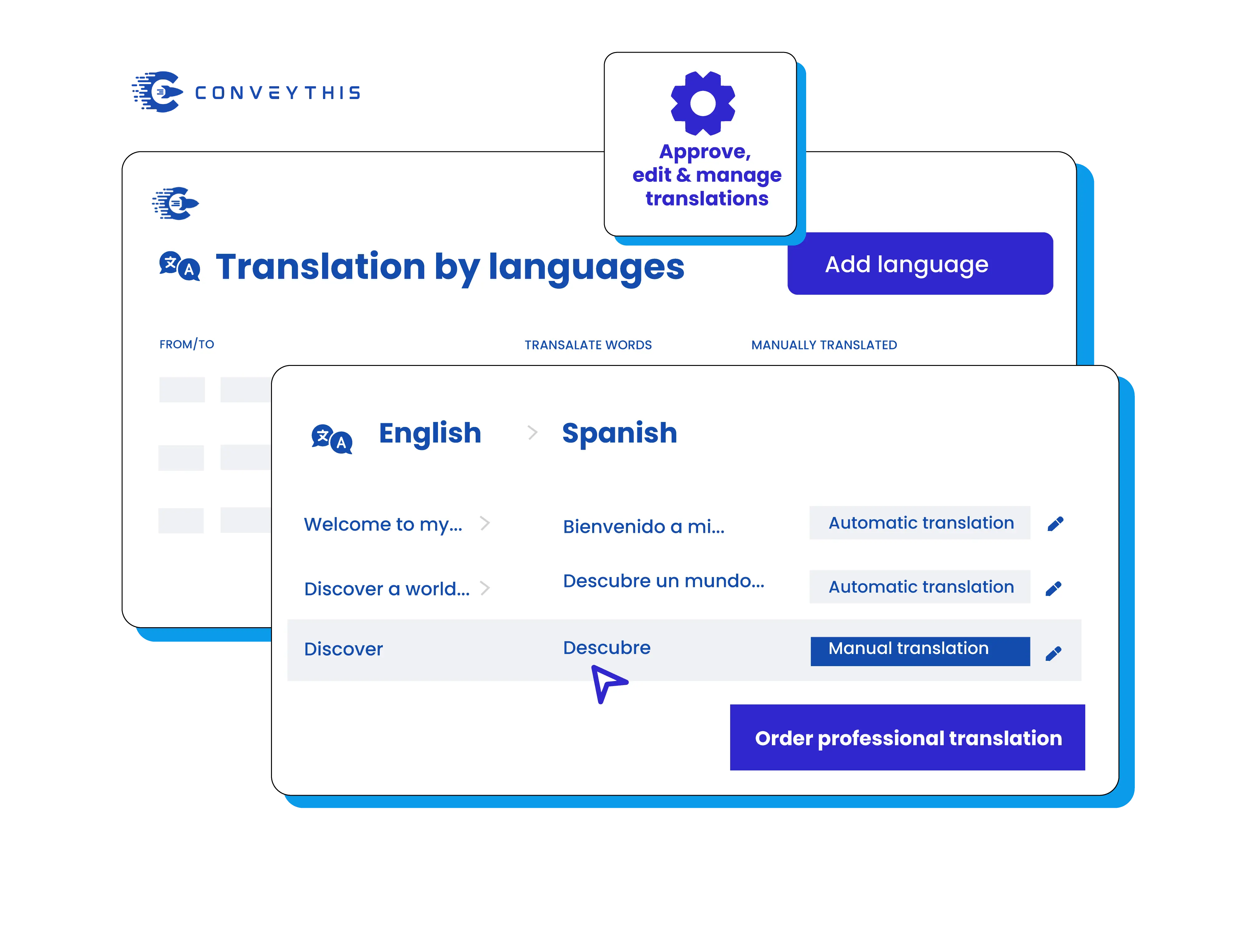
WordPress Content Translation Control
Translate your WordPress content with precision and maintain quality across all languages. ConveyThis provides AI translation with manual editing capabilities for posts, pages, and custom content. The visual editor lets you see translations in context within your WordPress theme, ensuring accuracy for blog posts, landing pages, and any custom post types you use.
Translation with QualityTake full control of your translations
WordPress Translation Team Management
Coordinate translation projects across your WordPress site with team collaboration tools. ConveyThis allows you to assign different translators to specific content areas, manage workflow approvals, and track translation progress. The system integrates smoothly with WordPress user roles, making it easier to manage large content sites with multiple contributors and translators.
Autopilot Translation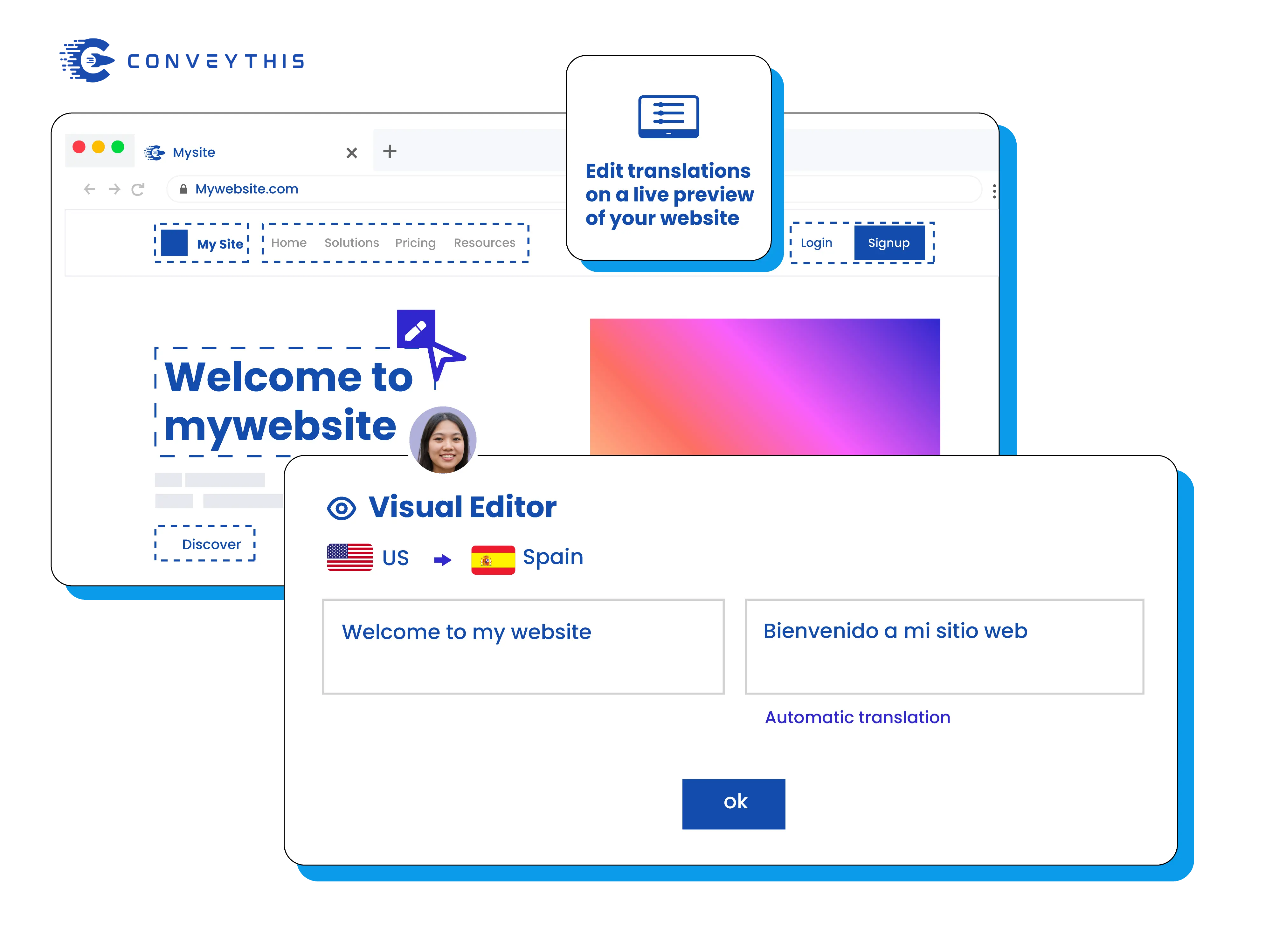
Connect with global audiences authentically
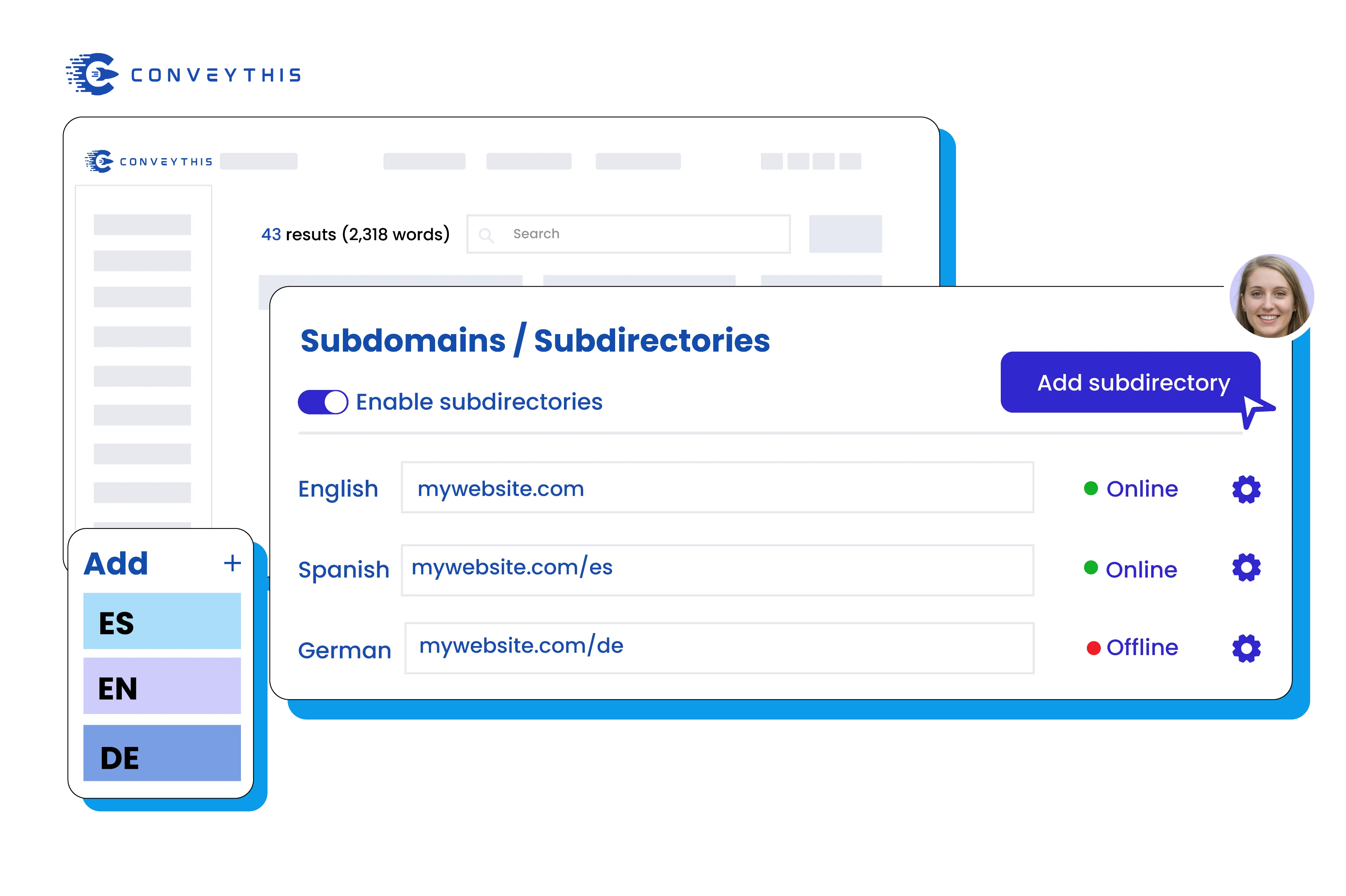
Full WordPress Site Localization
Localize every element of your WordPress site including widgets, menus, forms, and media files. ConveyThis translates custom post types, plugin content, and theme elements automatically. The solution works with any WordPress theme and handles complex content structures without requiring theme modifications or additional plugin configurations.
Start Localizing NOWEasily manage your translations
Intelligent AI Translation
Harness cutting-edge artificial intelligence to deliver professional-quality translations at scale. Our advanced neural networks understand context, tone, and cultural nuances to produce accurate translations. Fine-tune results with our intuitive editing tools and maintain brand consistency across all languages.
Dynamic SEO Enhancement
Maximize your international visibility with automated SEO optimization that adapts to each target market. Our system intelligently optimizes translated content for local search algorithms, implements proper URL structures, and ensures cultural relevance. Drive organic growth across global markets with translations that rank and convert.
Why choose us
One dashboard
Manage strings, media, SEO, and app content in one workspace.
Glossary & rules
Lock brand terms and product names to keep translations consistent.
Multilingual SEO
Automatic hreflang, localized metadata, and clean language-specific URLs.
Visual editor
Translate in context — edit directly on the page and preview per locale.
Machine translation
Start fast with machine translations, refine with brand rules and memories.
Multilingual site structure
Serve locales on SEO-friendly subdirectories/subdomains with an accessible switcher.
Visitor auto-redirection
Optionally route visitors to their browser language to reduce bounce.
Learn how to get started
Find how to make your website multilingual and watch it grow!
Integrate ConveyThis with your WordPress by following next simple steps:
Common questions
Have a different question?
Reach out to our dedicated support team — we're here to help, in multiple languages
 No card details
No card details